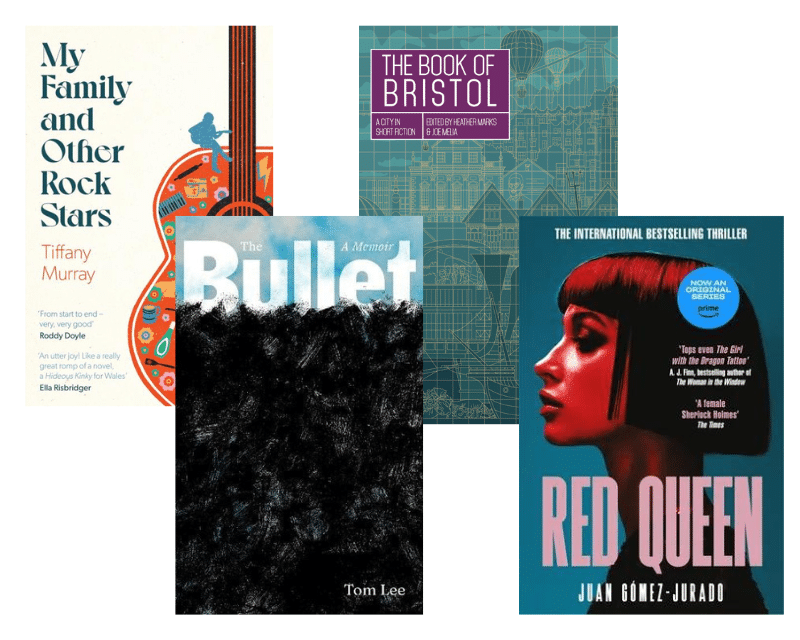- Collected
- Article
A Duty To The Dead
The ethics of crime fiction

- 14 August, 2023
- David Mark
He was a father more than a dad. Broad-shouldered, grey-haired. He had the sort of large, talented hands that could fix broken toys or apply a plaster to a grazed knee with equal dexterity. He had an air of solidity about him; that warm, peaceful scent of laundered clothes and wood shavings.
His name was Ray. He was sitting with me in a boxy meeting room at Hull Crown Court: letting a stranger use his heart as an inkwell. His hands were shaking, so he held them in fists. ‘I wish you’d met her’, he said, in the raspy voice of somebody who had spent months not letting themselves cry. ‘I wish he’d known her too. Not the girl he killed — the soul he took…’
It was hard to meet his eye. I concentrated on my notebook. Scribbled down his memories. I almost put my hand on his when he told me how he used to sing ‘Let Me Call You Sweetheart’ to her when she was little. I don’t think he needed me in the room. He just wanted to talk. Talk about her. About his girl: abducted, raped and stabbed to death.
She’d been walking home, you see. Just walking home from her Mum’s to her new place. A busy street on a dark night. It shouldn’t have taken more than a few minutes. Somewhere along her journey, she met him. The man now on trial for her murder. It would be a month before police found her body — stuffed in a cupboard outside his flat.
It was a hard story to cover. Story? Yes. That’s what journalists call people’s private agonies. A story. And I was always good at the murders. As a journalist in Hull, I had a sixth sense about which active investigations were going to turn from missing persons enquiries into murder hunts. This one felt odd from the start. She wasn’t the sort of girl to just go missing or run off with a secret boyfriend. And yes, that’s a hugely sweeping statement. That’s newspapers for you. Nobody would buy a red top called The Daily Nuance.
I remember standing by the gate outside the flat where her body was found. There were other journalists with me, swearing into their Nokia mobiles, updating angry newsdesks about developments. One of the tabloid staffers had given me an incongruous ‘hey-hey’ when he’d caught my eye at the press conference. He hadn’t seen me, he said, since the last one.
The last one had been a young woman in a little village in North Lincolnshire. She’d been murdered by her boss, her body concealed in a haystack down a remote country lane. I was there for three days on that one. I got to know her dad well. We were sitting in his living room drinking tea when the Family Liaison Officer took the call. A senior officer was on his way over. There had been a discovery.
If it was a movie, such a revelation would lead to a scream. I can tell you from bitter experience that grief feels like emptiness. Every whiff of joy and hope is sucked from the room and from the people within. It’s a stillness. An emptiness. A tastelessness. There is just the moment before, and the moment after.
Two decades on, I still carry Ray and his daughter with me. I carry them all. The enormity of Ray’s sorrow; that air of dignified annihilation. The regret; the emptiness; the absence of a person who should be here. I carry them all as I write my books.
Do I have the right to take other people’s reality and fictionalise it? Is it okay to be inspired by somebody else’s private Hell?
It wasn’t until I started running creative-writing classes that I even considered the morality of such a process. In every new class I teach there are a couple of people worrying themselves into the ground about the ethics of writing stories that are ‘inspired’ by real life. I’ve taught endless workshops about how to fictionalise reality — how to use the authentic emotion while distorting the events.
The first decent book I wrote – the one that so nearly got published – was inspired by that case. ‘Inspired’ is probably too weak a word. I rewrote reality so that Ray’s daughter got a more fitting kind of justice. I crafted a picture of the perfect tabloid victim: blonde hair, big eyes, bright smile. I crafted a picture of an innocent, visited by an abomination. And I created a character who would make a promise to avenge the dead, and see it through.
I didn’t ask Ray if he minded. The last time I saw him was in Tesco. He’d aged twenty years — his glasses thicker, his skin waxy. He remembered me. Smiled and shook my hand. Spoke about her, his daughter, as we stood in the pasta aisle and I told him I was a dad now. ‘Look after her,’ he said. He seemed genuinely pleased for me.
‘Are you still a journalist, then?’
‘Not really.’ I’d had enough by then. I’d covered the trial of a couple who had killed their year-old baby. My daughter was a year old at the time. Sitting in the press bench at court, watching a forensic pathologist demonstrate the child’s injuries by striking a doll against the witness box…that had done it for me. I was going to have to get serious about this novel-writing lark or this was my future.
Write what you know — that’s what they say. What do I know? I know detectives and how they operate. I know what it feels like to be in a room where a life ended badly. I know how to persuade reluctant people to talk to me and tell me things that might or might not have happened, but which make for new angles on a story. I know journalists. And I know how families and friends remember the dead. I’ve sat through the funerals of so many murdered men, women and children. I’ve witnessed dignity and rage.
The story inspired by Ray’s daughter didn’t get published until I already had a dozen novels under my belt. It was heartening to get a few messages from other ex-journalists who remembered that particular investigation. I’d done her proud, they said. Done the whole family proud.
It meant a lot. It almost salved my conscience for appearing on a true-crime documentary sharing all the lurid details of the case. It had been good for publicity. Bad for the soul.
What was that line Michael Connelly used in a Bosch novel? Don’t fall in love with the victim. It struck a chord with me. The connection between journalist and murder victim isn’t exactly a familiar trope but I do understand that feeling of being drawn to somebody’s ghost or spirit: the sensation of having made a covenant with the dead. It’s a feeling I try to infuse my novels with. I tell myself that my fictional victims aren’t characters. They’re real. These were lives. Lives snuffed out. And every Ray I write has been brought into existence as an avatar for the original — the man with the shaking hands and the wet eyes who held himself together so tightly that he could have shattered if somebody had slammed the door.
My creation, Detective Sergeant Aector McAvoy catches fictional killers, but the emotions that suffuse my books are real. Each killer I create, each soul touched by tragedy, each copper who makes a promise to the dead: they all filter through Ray and his murdered girl.
Do I have the right? I don’t know, but I hope it does justice to a life snatched too soon. I hope it makes for more authentic books. I hope the act of writing gives me a place for some of the darkness I’ve waded in. My books are fiction, but each tear shed on the page holds up a mirror to those shed by the families of the taken. I hope I do them honour.
You might also like:
RLF Fellows’ News: May 2024
Publishing RLF Fellow Tom Lee’s new book, The Bullet, his memoir about family and mental health, has recently been published…
Her Majesty The Queen is announced as our new Royal Patron
To mark the first anniversary of Their Majesties’ Coronation, it has been announced Her Majesty The Queen will take on…
WritersMosaic & Jhalak launch The Review today
The first issue of The Review by WritersMosaic & Jhalak is out today. The Review is an editorially independent, 20-page…


